Rock gardens can be created at any summer cottage. Plants for an alpine slide are chosen taking into account the light and moisture. For landscaping, dwarf shrubs and flowering herbaceous crops, which do not require a lot of land, are combined with a fibrous, rapidly growing root system.
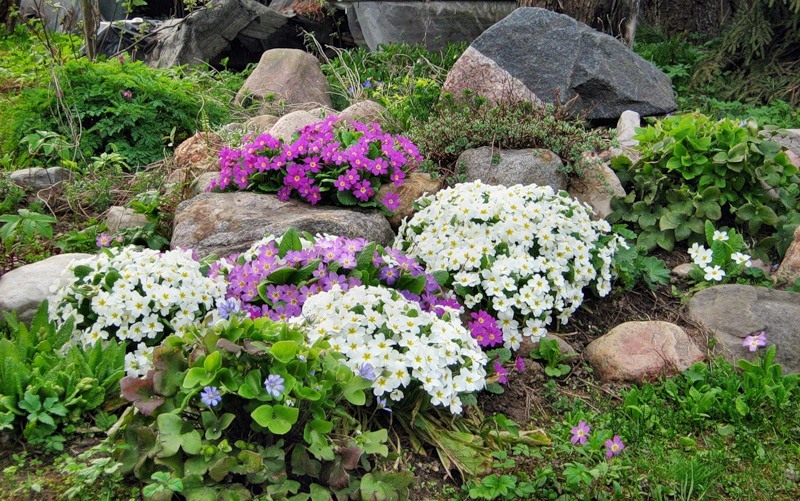
Alpine slide is an element of landscape design.
What plants are needed for a rock garden
Content
- What plants are needed for a rock garden
- Annuals and perennials blooming all summer
- Conifers and shrubs for rock garden
- Layout scheme
- Upper tier
- Middle tier
- Beautiful examples in the photo
- VIDEO: Flowers for an alpine slide in the garden.
- 50 beautiful design options for an alpine slide:
It is advisable to choose perennials, unpretentious plants that do not need constant care, watering. You should not choose rapidly growing and highly branching crops, so as not to spoil the appearance of the rock garden.
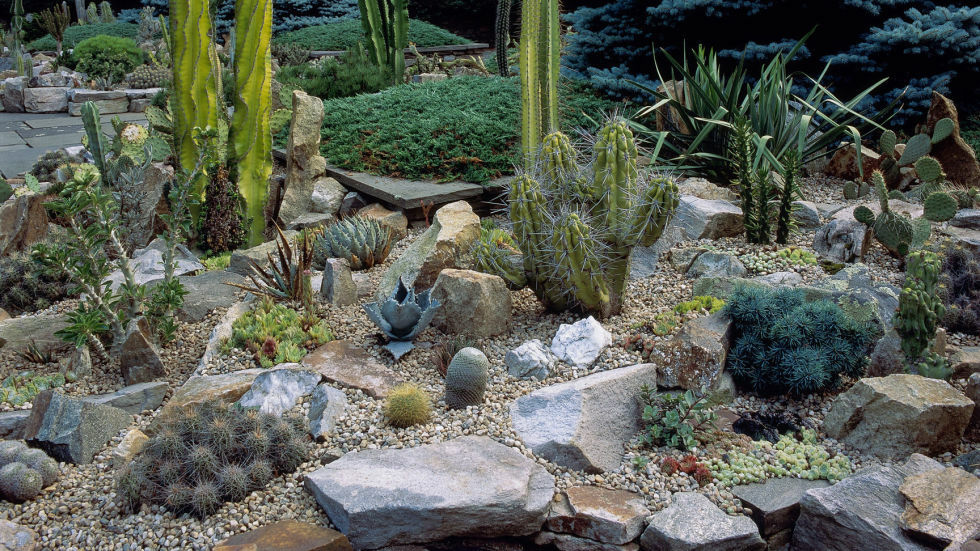
This unique composition, as a rule, imitates a mountain landscape.
Important! The ideal option for a slide is plantings that are harmoniously combined in size, color, growth rate, flowering time.
The principle of any composition is a combination of plants with different flowering periods. Autumn annuals are planted next to early flowering perennials. Flowering plants are essential for any rock garden. When the stones are heavily exposed, a dull gray background takes the lead.
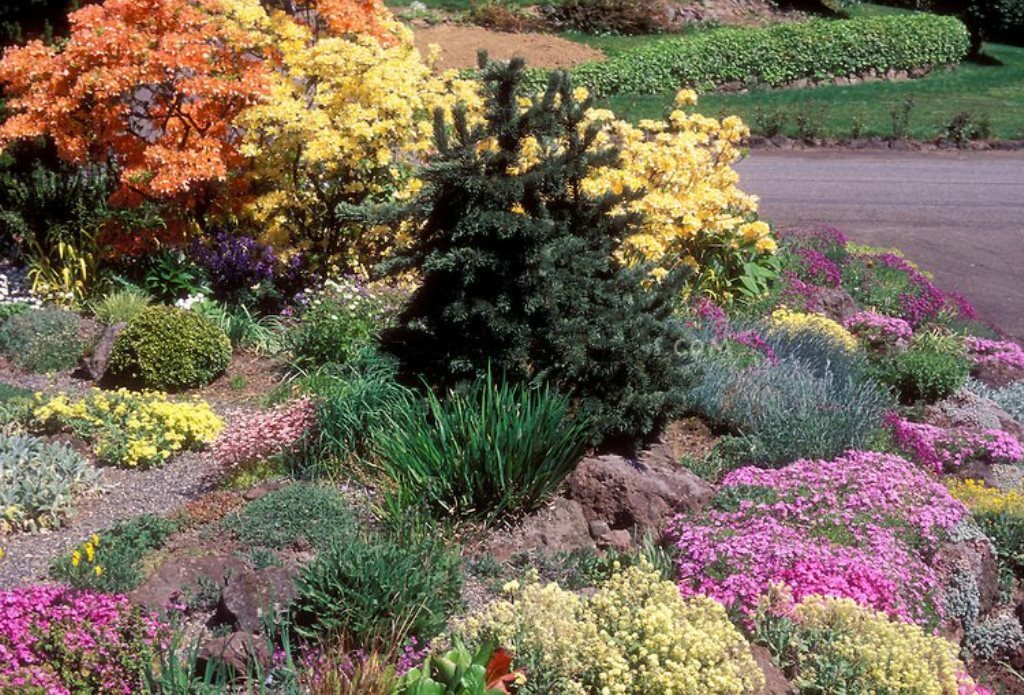
A rock garden is a simple and unique way to recreate a piece of nature on your site.
Annuals and perennials blooming all summer
It is better to choose from annual flowers for an alpine slide:
- Marigolds form dense caps or hemispheres with a disc-shaped base. This is the name of a whole family that includes many species. You can combine different shapes and shades: pale yellow pom-poms and light brown hemispherical buds with a golden border.
- Rhodiola vulgaris, pink, which begins to bloom in early summer, retains its decorative effect until late autumn. Dense leaves fit tightly around the stem.
- Periwinkle, which tolerates partial shade well, is distinguished by long flowering. If you remove wilted buds, it will bloom profusely.
- The notched dimorphoteka is a dense sun-colored chamomile that blooms from June to the end of August. They are characterized by unpretentious care, they can tolerate periods of drought.
At the dacha, alpine slides are made for a long time, so gardeners give preference to perennial flowering plants.
Note! Do not cover boulders with creeping flowers - the basis of a decorative object. The stones are laid asymmetrically, with large gaps.
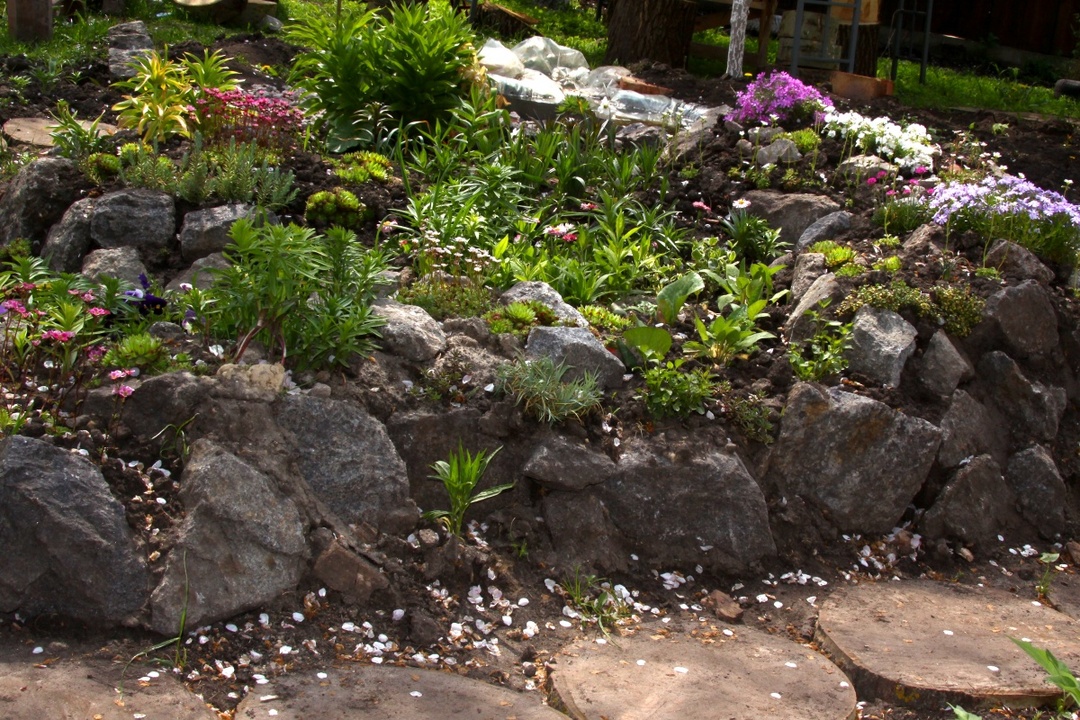
A group of stones should rise in the center; on the slopes of the hill, terraces with various plants are formed.
Perennial flowering herbaceous shrubs:
- Alpine aster is a chamomile-shaped white, pink and blue flowers. The first buds appear in June, flowering continues until August.
- Chinese Astilba is valued for its shade tolerance; it can be placed on the northwest side of the rock garden. The plant forms a dense cover with small purple inflorescences.
- The Carpathian bell is not picky about the composition of the soil. There are white and blue species. Even when not in bloom, the plants look decorative due to carved leaves and branched stems. Forms compact bushes about 25 cm high.
- Salvia or oak sage produces purple sultans, which attract insects and exude a delicate aroma. Flowering lasts a long time, gradually the lower buds fade, new ones bloom from above. The height of the stems is 15–20 cm.
- Aubrietta blooms so profusely that no stems are visible behind the buds. It is well fixed in crevices, does not require maintenance, grows wild, forms a sprawling low bush.
- Alyssum marine is a low-growing shrub that blooms from May to late autumn. Delicate pink inflorescences retain their decorative effect for a long time.
- Arenania crimson - drought-resistant, pleases with pale pink buds in the form of stars from June to October. Forms a compact bush.
- Perennial chrysanthemum is more related to late-flowering varieties. Blooms in July, buds appear before frost. Terry hybrids form dense pompons that sway in the wind.
- Alpine carnation or "watch" is hygrophilous, blooms in mid-June. The budding period ends in mid-August. Shoots with narrow matte leaves form a low cover.
- Herbal carnation is prized for its abundance of flowering. Small buds form a living carpet of carmine color. The plant is suitable for creating bright color spots in the composition.
- The sunflower cannot boast of gorgeous flowers, but it blooms several times per season. It produces small buds of a rare salmon shade.
- Large-flowered purslane of summer-autumn flowering, cup-shaped flowers of different shades do not fade for a long time.
The list of plants can be supplemented with other low-growing crops. Perennials eventually form dense plantings, displacing weeds. Early flowering crops often release inflorescences again in September after nitrogen fertilization in July.
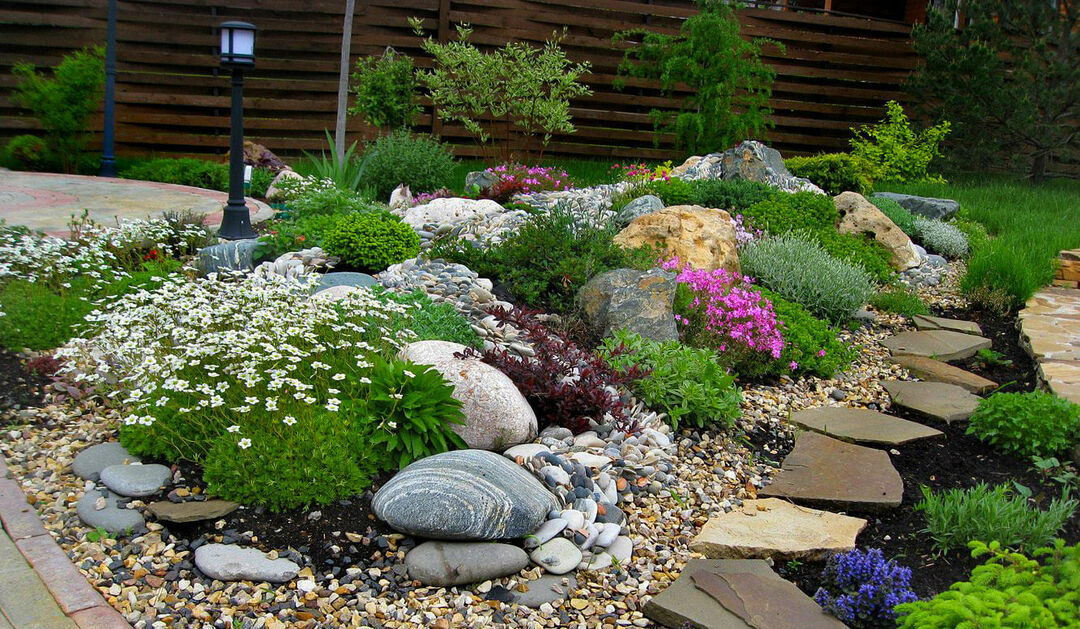
If the site is completely flat, then the rock garden (also called rockery or stone garden) will give it an element of movement.
Important! Compositions should not be overloaded with plants of the same type; the shape and color of the leaves should be taken into account.
Conifers and shrubs for rock garden
From conifers choose undersized and dwarf varieties of spruce, pine, thuja, juniper. Creeping coniferous shrubs are planted at the foot; this is an excellent background for flowering perennials. It is dangerous to overload rock gardens with conifers. For a compositional solution, two, maximum three plants are enough. Spruce pine grows well on rocky soil, junipers are prone to burning out in the sun, they love partial shade. Thuja for rock garden choose frost-resistant, which do not need to be covered for the winter.
From shrubs, cypress trees look good. Many species have been bred with bluish and yellowish needles, weeping and spreading crowns.
For reference: erect shrubs will only be appropriate in the background on the shady side of the slide.
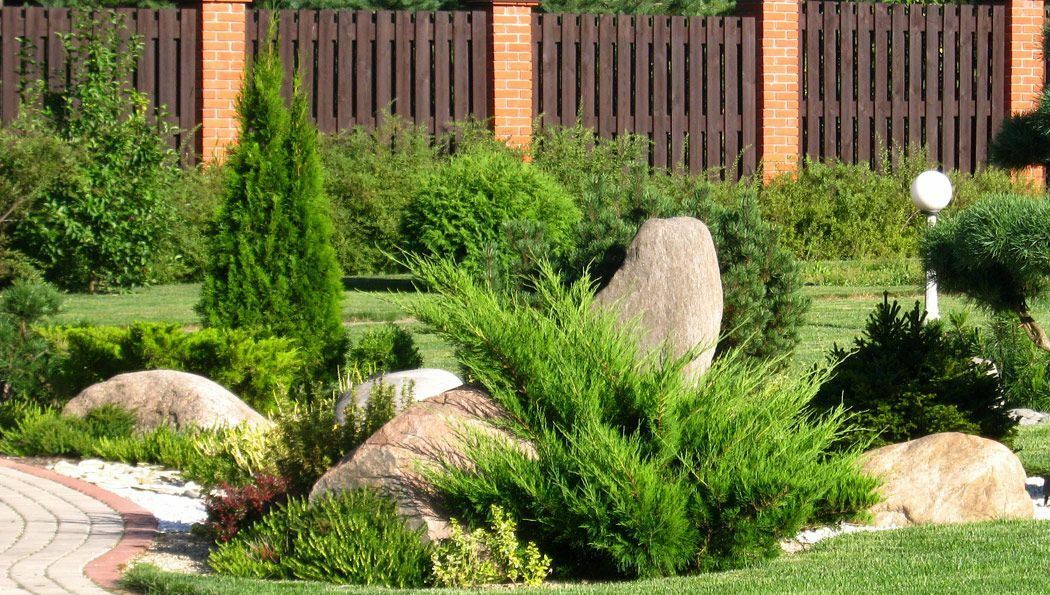
In rock gardens, coniferous evergreens are often used.
Layout scheme
When creating a rock garden, natural relief irregularities are used or artificial hills are created. When choosing crops for a rock garden, take into account the different illumination from the southern and northern sides of the hill.
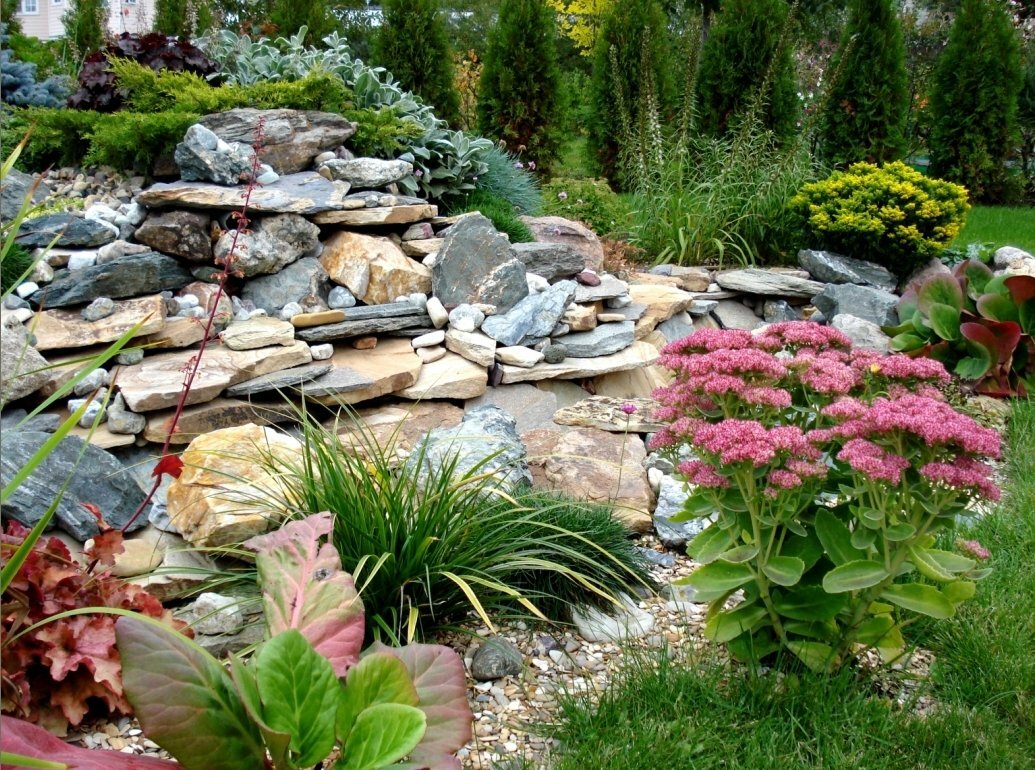
The arrangement of plants on an alpine slide should look natural.
In step-by-step workshops, planting begins from the top point, then planting is done in segments. Sun-loving drought-resistant perennials and annuals are placed on the south side. From the north, it is better to plant juniper and pine. The scheme also includes ground cover and grass grasses that create the necessary entourage.
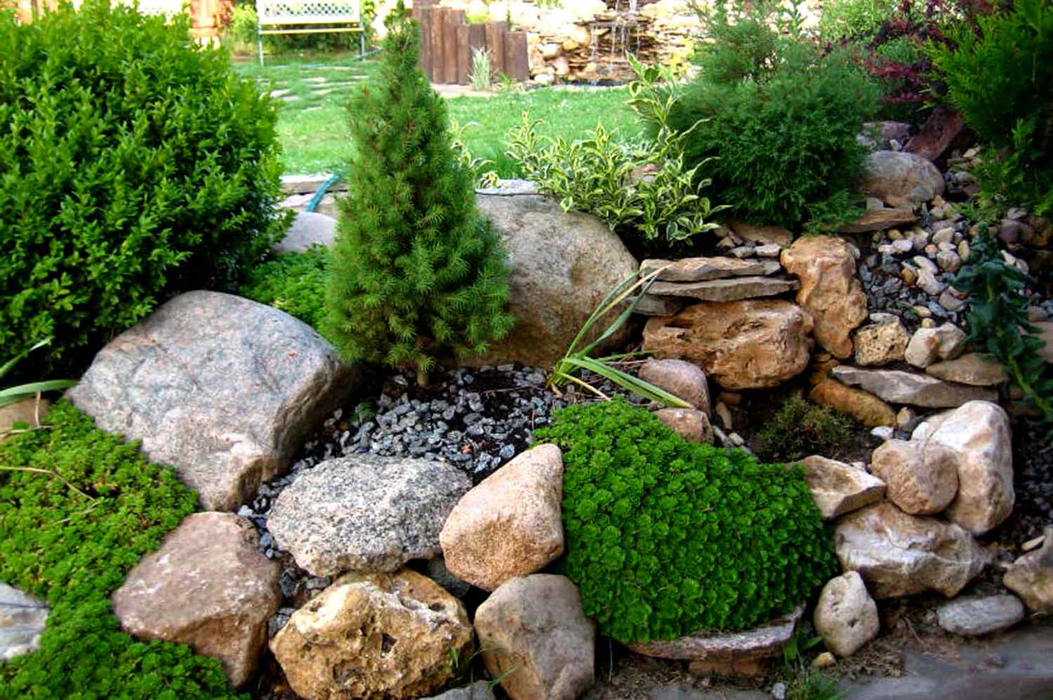
When planting, do not arrange the plants in rows or columns, avoid symmetry.
Important! Observing the sequence of flowering plants, you can achieve the effect of an ever-blooming rock garden. When choosing paints, it is worth considering the combination of colors in order to avoid clumsy.
Upper tier
Drought-resistant crops, undemanding to watering, are placed in the upper part of the composition. At the top of the alpine hill, plants are planted that are not afraid of strong winds, the sun does not interfere. During rains, the soil is washed out of the depressions, the roots should form a dense sod. For the upper tier, carnations, alyssum, ground cover shrubs with ornamental greenery are chosen. Above, only compact, small-leaved perennial plants survive, giving a small annual growth.
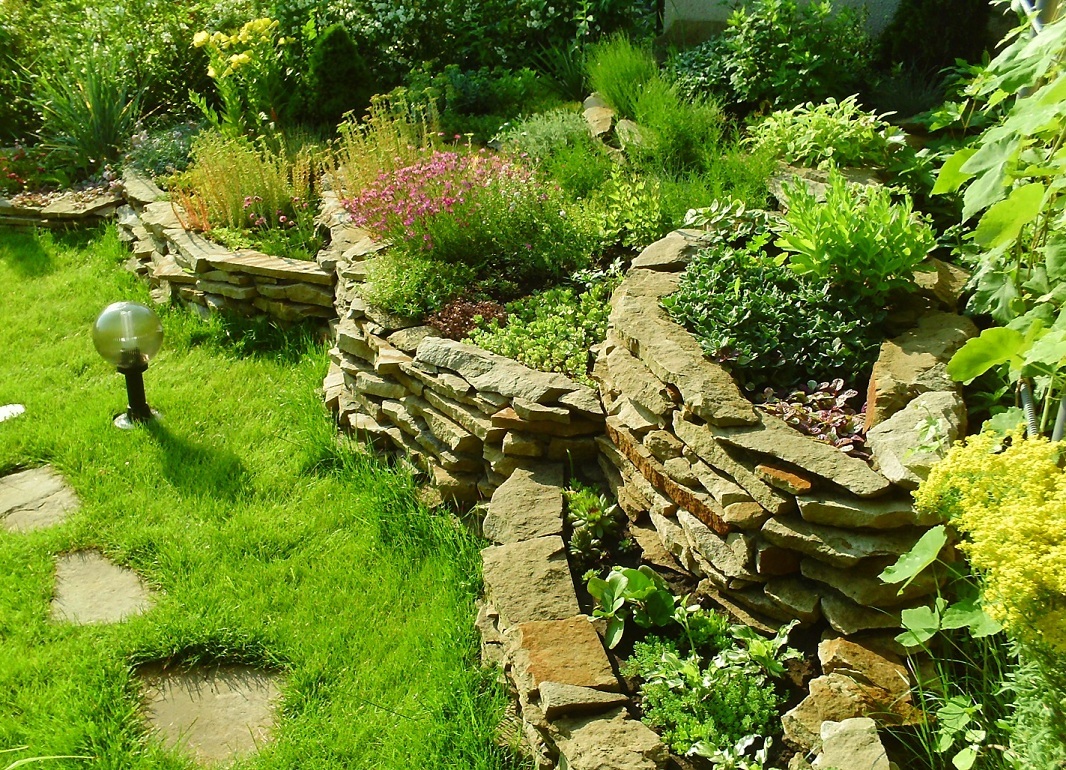
If you are new to mountain gardens, skip purchasing rare plants.
Middle tier
When arranging an alpine slide, drainage must be provided, therefore, water does not stagnate in the middle tier. From long-blooming perennials, Aubrieta cultural grows well, Carpathian bells, all types of carnations. The composition is complemented by contrasting annuals: bright marigolds, blue periwinkles. You can plant two-year-olds: violets (pansies), daisies, which reproduce by self-seeding. Shoots appear in the most unexpected and inaccessible places.
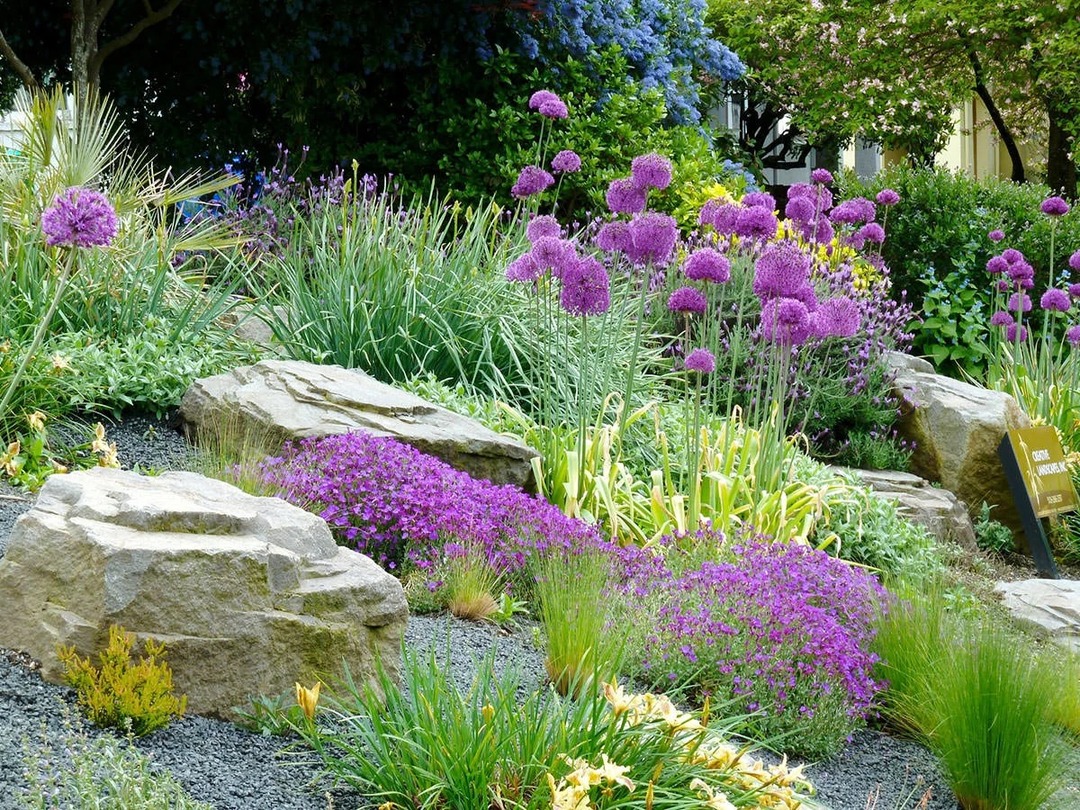
Start with the most unpretentious plants, and add more exotic ones as you gain experience.
There are no definite canons, each rock garden is unique. The process of arranging an alpine slide is a good springboard for experiments. In order for the creation to please the eye for a long time, it is better to choose unpretentious crops that are resistant to return frosts, rainy weather, and harsh winters.
Beautiful examples in the photo
Summer is rich in colors, but in the composition of the alpine hills, plants only emphasize the natural beauty of stones and boulders. These are the main elements of any composition.
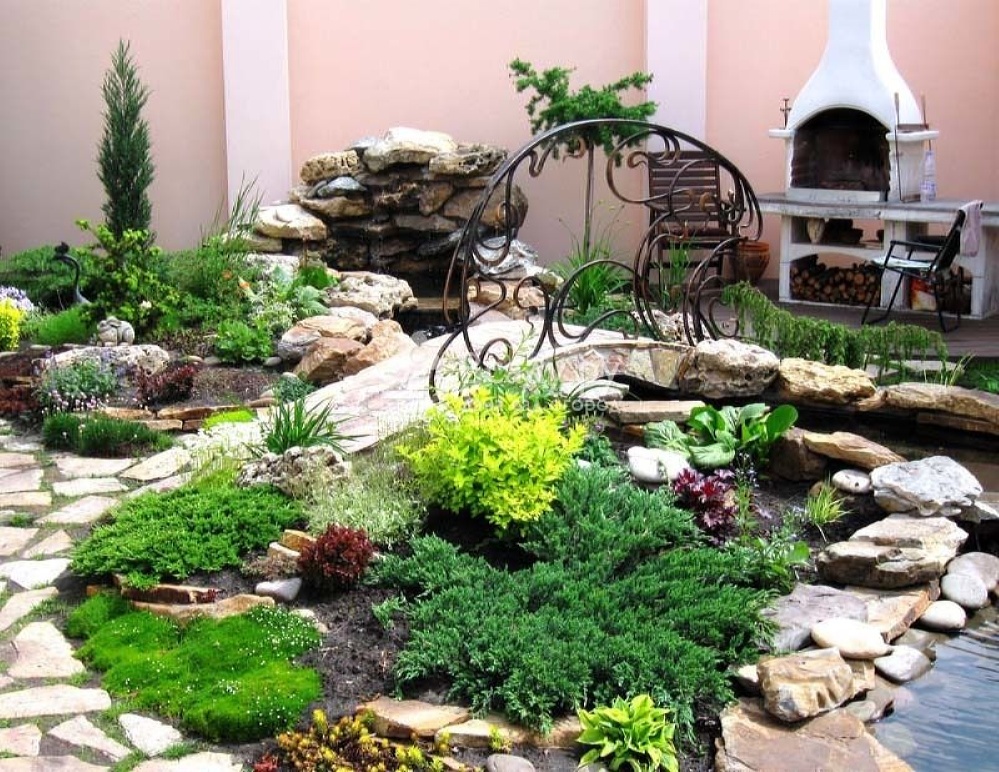
Large stones, well chosen and correctly positioned, are the main beauty of the stone garden.
Slides, decorated in the Provence style range, convey the freshness of alpine meadows, the charm of herbs. They create a romantic mood.
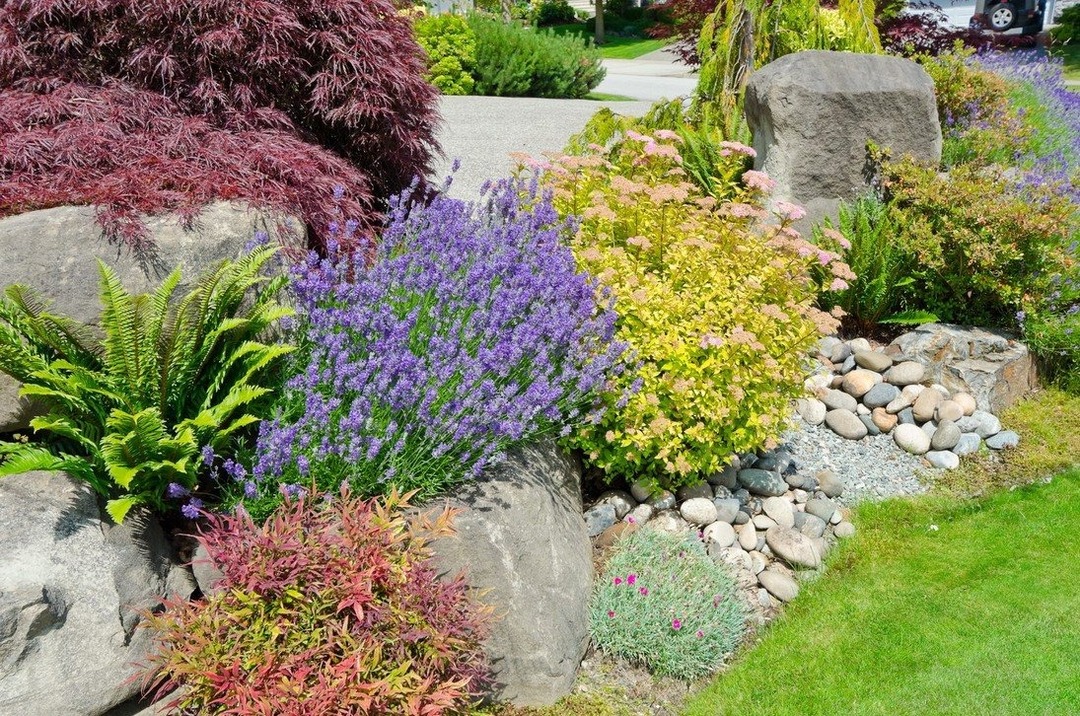
The construction of an alpine slide on your site is not an easy occupation, but very interesting.
Color spots can be single. In the scheme, perennial flowers replace plants with decorative coloration of stems and leaves. A variegated euonymus or a red-leaved barberry at the foot of the hill will be a great addition.
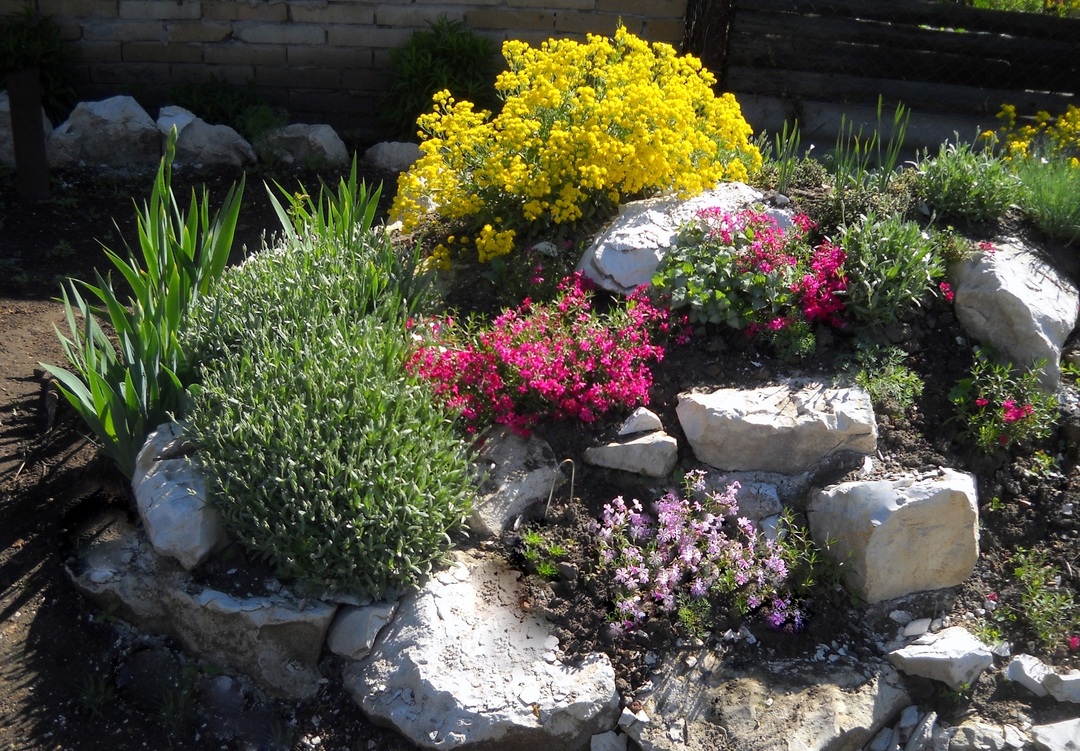
Start the process today, and very soon there will be a beautiful alpine slide on your site - a source of your pride.
Compositions with coniferous shrubs and trees always look advantageous. Dwarf blue spruce, juniper are appropriate on low hills. A selection of photos will awaken imagination, every gardener can create something similar.



